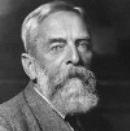Economics is less about money, then it is about resource management. That is how to satisfy unlimited wants, with scant resources.
The question of how to satisfy unlimited wants with limited resources, is one that effects a multitude of people including individuals, firms and governments. A very important concept that needs to be understood, in order to effectively answer this question, is that of opportunity cost.
Opportunity cost, is often referred to as the "real" cost of things. That is, the cost of investing energy or resources into something, is the cost of not being able to spend those resources on something else.
For instance, the individual may choose to spend his money on a new car, or has the option of taking an overseas holiday. The "real" cost of spending his money on the holiday, is not being able to spend his money on a new car, which will have implications on his lifestyle.
However, the issue of opportunity cost affects the firm, in a slightly different manner. The firm must decide whether or not to invest its resources, in stepping up production of an existing product, or producing a completely new product. This means that the "real" cost of choosing to step up production of a certain product, was not being able to produce an additional product, which may give the company an advantage in the marketplace.
Finally, the government is affected by the issue of opportunity cost, and the manner with which the government deals with this problem has by far the broadest implications on the largest number of people. The government must try to balance satisfying community wants, with spending resources for the good of the country. They must also deal the with the fact that for every dollar they spend on what...


